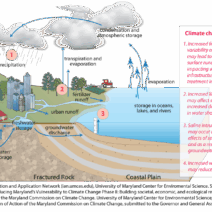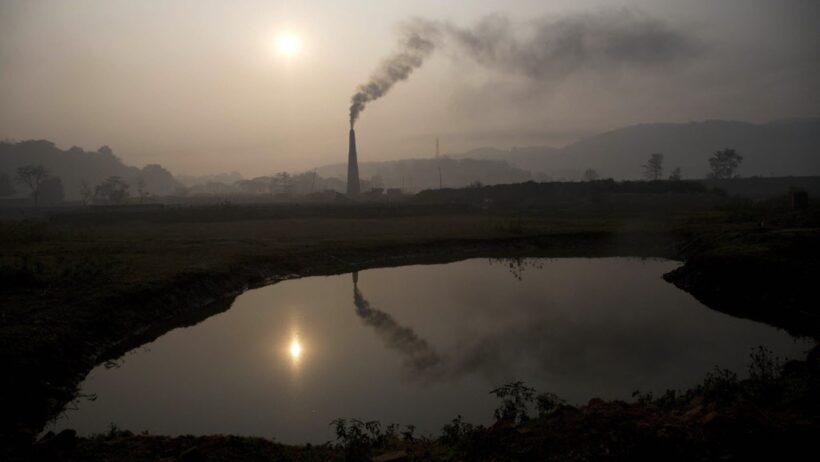In the ever-evolving narrative of our planet’s health, geoengineering emerges as a striking motif akin to a double-edged sword—elegant yet fraught with peril. It invites us to consider whether technological ingenuity can rescue Earth from the throes of climate change. This article seeks to unravel the multifaceted concept of geoengineering and its potential to either save or doom our natural environment.
To comprehend geoengineering, we must first delineate its essence. Geoengineering refers to deliberate, large-scale interventions in the Earth’s climatic system, with the intent to counteract climate change. This can be broadly categorized into two distinct approaches: solar radiation management (SRM) and carbon dioxide removal (CDR). SRM aims to reflect a fraction of solar radiation back into space, thereby reducing global temperatures. In contrast, CDR seeks to extract carbon dioxide from the atmosphere, addressing the root cause of global warming.
One of the most compelling methods under the SRM umbrella is stratospheric aerosol injection, a process reminiscent of ancient volcanic eruptions. When volcanoes erupt, they release sulfate particles into the stratosphere, reflecting sunlight and, in turn, cooling the planet. Scientists propose a similar approach by dispersing aerosols into the atmosphere. For proponents, this is an elegant solution to the heat trapping effects of greenhouse gases. However, the specter of unintended consequences looms large; it risks altering precipitation patterns and could wreak havoc on ecosystems that thrive on established climatic cycles.
Then, there is the tantalizing prospect of marine cloud brightening, which involves spraying seawater into the atmosphere to enhance cloud reflectivity. Imagine the ocean as a vast, blue canvas, and the clouds as wisps of luminous white paint. This technique holds the promise of cooling the planet but carries uncertainties regarding ecological impacts and regional weather changes.
On the flip side, CDR techniques, such as afforestation, bioenergy with carbon capture and storage (BECCS), and direct air capture (DAC), aim to restore the balance of carbon in the atmosphere. Picture a world where green trees stand as sentinels against climate change, absorbing CO2 and exhaling life. Engaging in afforestation, or planting trees on a grand scale, is a historically celebrated method for enhancing carbon sinks. However, it is not without limits; vast expanses of land are required, and conversion of natural habitats into monoculture plantations can lead to biodiversity loss.
BECCS, a sophisticated amalgam of biomass energy and carbon capture technologies, offers another avenue. Imagine power plants adorned with mechanisms that capture CO2 emissions, akin to a net gathering fish in a vast ocean. While BECCS showcases remarkable potential, questions emerge about sustainability and land use impacts. It raises the specter of food security as arable land becomes increasingly allocated to biomass feedstock.
Direct air capture operates with a different kind of allure, manifesting as large industrial plants that filter CO2 directly from the atmosphere. This technology represents the pinnacle of human engineering—a mechanical lung for the Earth, actively cleansing the air. Nevertheless, it demands substantial financial and energy investments, leaving skeptics questioning its scalability and feasibility.
As we investigate the prospects of geoengineering, ethical considerations become inescapable. Should humanity be entrusted to act as the Earth’s architect? The potential for moral hazard arises: with the allure of technological fixes, we may be tempted to relinquish responsibility for reducing greenhouse gas emissions through traditional means. This leads to the philosophical dilemma of whether we are co-creators of our planet or mere players in a grand experiment with unpredictable outcomes.
Furthermore, public perception poses a formidable challenge. The idea of manipulating the Earth’s climate is often met with skepticism and fear. To many, it resembles playing God, tampering with natural processes that have evolved over millennia. Education becomes crucial; to embrace geoengineering responsibly, society must engage in transparent dialogues about the risks, benefits, and ethical implications involved. Without public buy-in, the very technologies meant to rescue the planet may end up exacerbating the problem.
In summation, geoengineering presents an intriguing tableau in the climate change discourse, combining the poetry of human ingenuity with the prose of potential catastrophe. The captivating idea of technology as the savior of our planet tantalizes us with visions of a cooler, sustainable future. Yet, it is imperative to recognize that geoengineering is not a panacea that permits us to neglect emission reductions and conservation efforts.
In navigating this politically charged terrain, humanity must tread cautiously. Balancing innovation and responsibility will be our collective challenge. As stewards of the Earth, we face the monumental task of delineating boundaries, rigorously assessing risks, and fostering collaborations that embrace the complexity of climate science. Whether technology can indeed save our planet remains an open question, but the journey towards understanding and addressing climate change is a venture we cannot afford to abandon.







